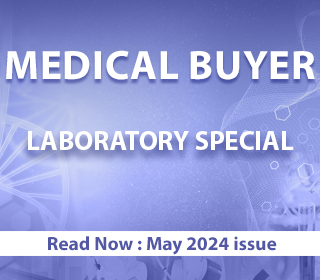Buyers Speak
Features and technological advancements impact decision making hugely

Modern anesthesia workstation, apart from basic components (including gas delivery, electronic flow meters, vaporizers, breathing circuit, scavenging system), consists of the advanced ventilation, anesthesia and patient monitoring system and integration with electronic medical records.
Some relevant advanced features in the latest workstations.
- Electronic flow meters are not only more accurate but also do not have problems related to multiple mechanical parts.
- Ventilators are using electronically driven piston that generates flow instead of pressurized oxygen in traditional ventilators. This saves oxygen considerably.
- Breathing circuit circle system is compact. Circuits enable rapid changes in gas composition at low flows. Water-vapor or moisture conservation is better.
Target controlled anesthesia
The fully integrated and automatic system provides target controlled anesthesia (TCA) capabilities. With TCA capability, the anesthetist can set the target end-tidal oxygen and anesthetic agent values and the integrated system constantly monitors these values and automatically adjusts the gas delivery and total flow in order to maintain the set target values. Smart in-built safeguards help protect against over-delivery and under-delivery of agent and hypoxia. This provides cost-effective anesthesia by keeping gas and agent consumption to an absolute minimum.
Monitoring systems
Most modern anesthesia monitoring systems have flexible display screen that can be configured according to preferences from extensive clinical parameters that include hemodynamic, respiration and ventilation monitoring, temperature, anesthesia depth monitoring, and anesthesia gas monitoring. Certain monitors also provide monitoring of muscle relaxation. Many of these monitors are capable of giving graphical as well as numerical trend of vital parameters for the past 24 hours. In hemodynamic monitoring, along with automated non-invasive blood pressure monitoring, one can monitor invasive pressure like central venous pressure, arterial pressure or pulmonary arterial pressure. Most of these monitors are also equipped with cardiac output monitoring. One can also monitor ventilator parameters, including compliance, auto PEEP, and various loops (flow volume/pressure volume) and graphs (pressure-time, flow-time or volume-time). Other parameters that can be monitored include anesthesia depth, end-tidal concentration of various anesthetic agents, inspired and expired oxygen concentration, and temperature.
Automatic machine testing
Most modern anesthesia delivery systems perform some degree of self-test and have ability to detect and report many faults if not all, such as valve failure.
Automated record keeping
Anesthesia information management system automatically records data from the monitors like vital signs and ventilator parameters for charting purposes.
Power backup
Since all modern workstations have more complex electronically controlled systems they depend heavily on continuous supply of electricity and have battery backup. It is important to know the duration of battery backup available, so that in case of power failure suitable manual back-up mechanisms are kept ready.
Advancement in hardware in ultrasound machine for applications, such as echocardiography, regional anesthesia, or central line placement are improving patient care as well.
- Current electroencephalographic depth of anesthesia monitoring focuses on prevention of too deep or light anesthesia that may help to reduce delirious outcome.
- New approach to clinical airway management, such as video laryngoscope and advanced supraglottic airway devices (SAD) also protect the patient from injury.
Video laryngoscopy offers higher first attempt endotracheal intubation success rate in both predicted and unanticipated difficult airways and also rescue intubation.
Specifically designed SADs offer better ventilatory performance. In the same manner computer-controlled drug infusion system provides precise delivery and recovery from anesthesia.
Specific features and technological advancements in anesthesia equipment are having a major impact on decision making, safety of patient and on healthcare industry.














